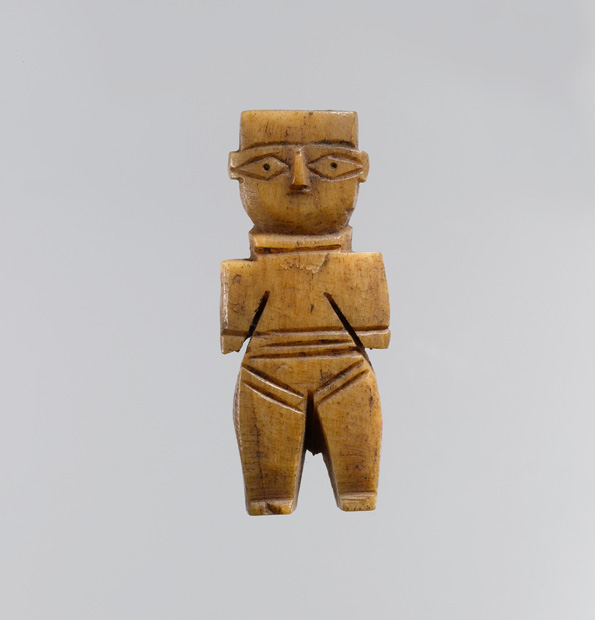In many cases, burials have served as windows onto a past culture's daily life. Children's graves are no exception. Although attracting less archaeological attention than other finds, they provide abundant material that informs our understanding of the diverse activities and habits of people during the Greco-Roman, Byzantine, and Islamic eras. Figurines that have been unearthed in the Eastern Mediterranean, in children's graves as well as in other excavation contexts, are among the many objects that Byzantium and Islam has put on display.
Left: Figure, 7th–9th century. Egypt. Bone; carved and incised. The Metropolitan Museum of Art, New York, Gift of Lily S. Place, 1921 (21.6.107); Right: Figurine, 10th–11th century. Made in Egypt. Bone, carved; painted with black organic material. The British Museum, London (1979,1017.203)
The diversity of stylistic traits and the manners of executing these dolls is relatively standardized and does not change much over the span of time covered by the exhibition. Scholars connect some of the figurines discussed here to the modern 'arusat al-mawlid (bridal doll), the history of which can be traced back to the Tulunid period (868–905), through the Fatimid period (909–1171), and into the Ottoman period (1517–1914) until contemporary times. The Egyptian art historian Abd al-Ghani al-Nabawi al-Shal discusses how female dolls have various meanings, such as happiness, fertility, and protection. He also suggests that the figurines are affiliated with warding off the evil eye during the well-known dance rituals called zār. These dances, usually performed by women, are associated with the Eastern Mediterranean and North Africa. It is very likely that these particular dances emerged as part of the new traditions introduced during Fatimid times.1
[1] ʻAbd al-Ghanī al-Nabawī Shāl, ʻArūsat al-Mawlid. al-Qāhirah: Dār al-Kātib al-ʻArabī, 1967.

